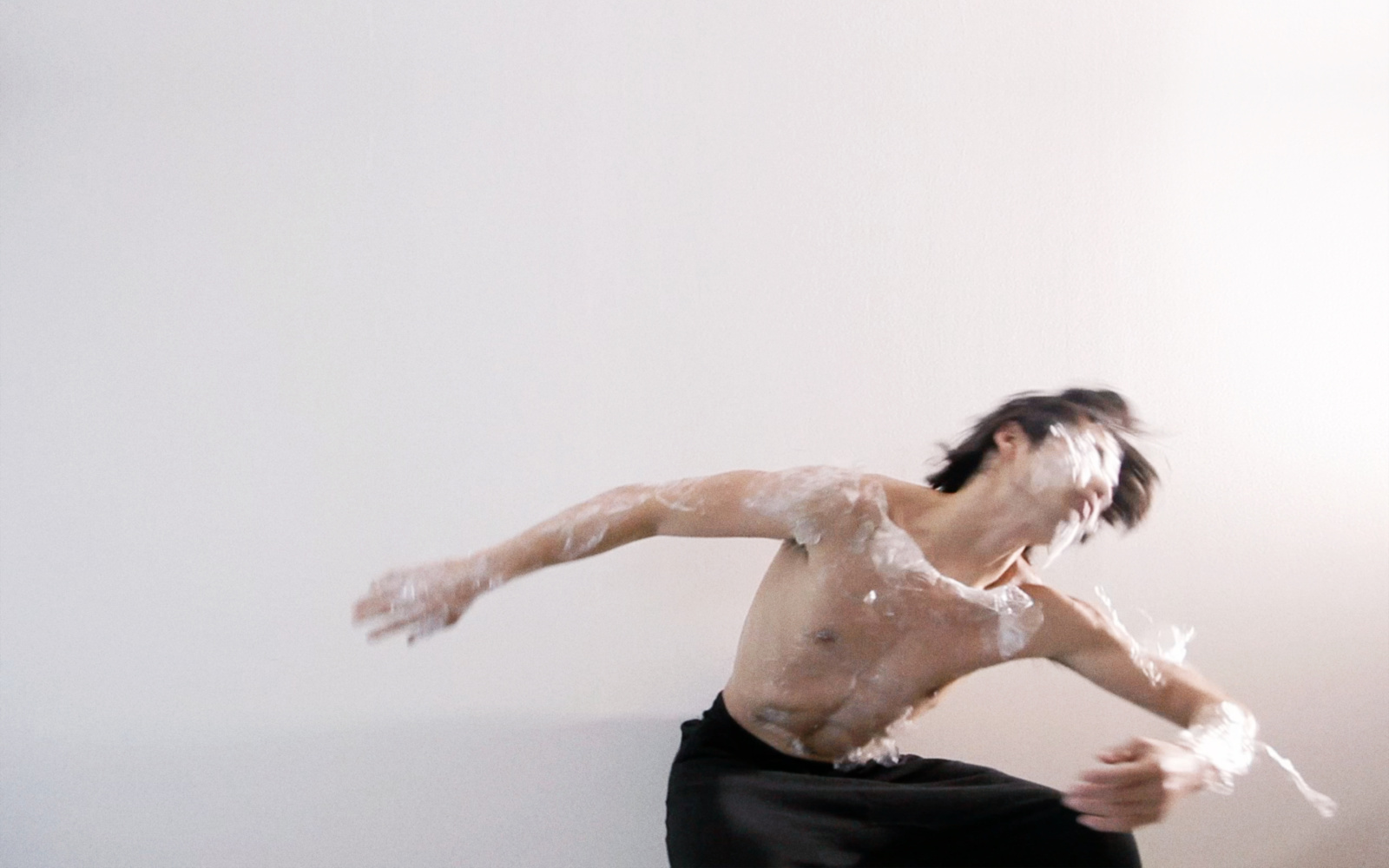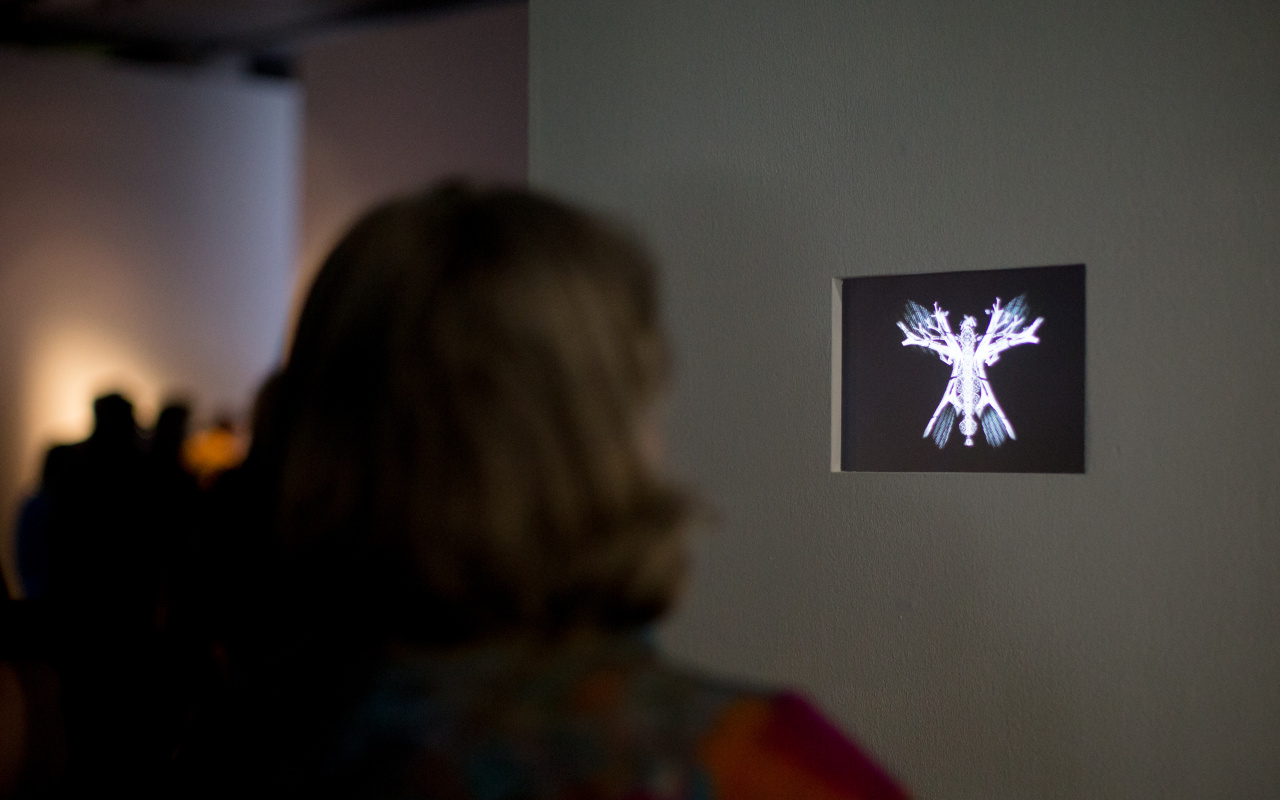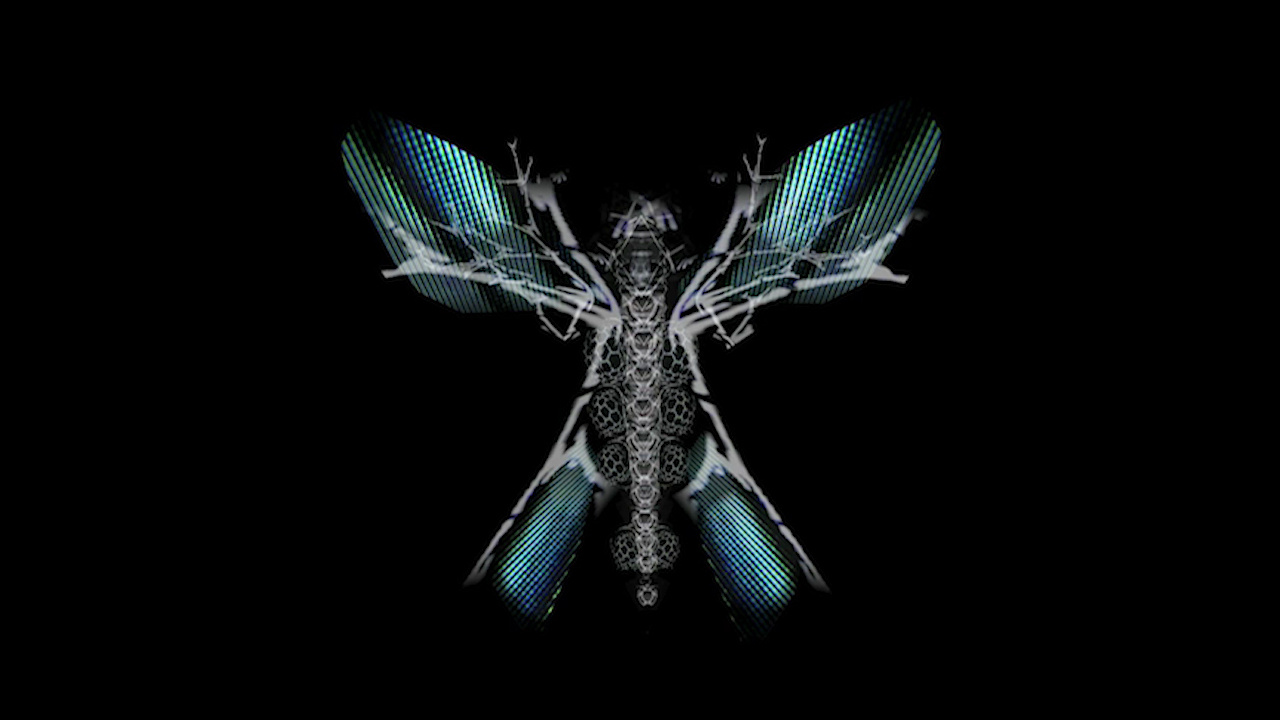Rohini Devasher
Rohini Devasher works in a variety of media, including large site-specific drawings, video, digital printing, and sound. Her works are about complexity and how complexity is built into the natural order. Playing with organic boundaries and imaginary microcosms, »Bloodlines« and »Doppelgänger«, are distinct yet related motifs or episodes; each episode exploring the way complex morphological relationships can be explored via video feedback and recursion. This suite of works explores processes of growth and evolution through a technological matrix.
Bloodlines (2009)
»Bloodlines« emerges from an idea put forward by evolutionary biologist Richard Dawkins in his book »The Blind Watchmaker« (1986) about "a warehouse full of impossible monsters..." Exploring the theory of cumulative selection, Dawkins asks us to imagine a huge grid, a massive hanger with an infinite number of shelves extending in all directions. »Bloodlines« begins with seven "parent" forms, each stemming from the gradual construction of an intricate skeletal structure made of individual, manually placed layers of video. The work introduces us to a family tree where each "parent" breeds a set of progeny, which in turn produce offspring of their own. The raw footage for the video was video feedback. In principle very similar to the old kaleidoscopes, video feedback is created when any ordinary hand-held camera is plugged into a TV and then made to point at itself. This footage is then sliced and edited by layering and manually stacking within a video-editing Software to create the work.Doppelgänger (2011)
In »Doppelgänger«, two dragonflies, side by side, are "drawn" with lines of video-feedback. The forms are hybrid, deliberately layered and constructed to begin a new taxonomic structure. The two Videos are related yet distinct; »Doppelgänger I« charts a slow process of evolution gaining in complexity. »Doppelgänger II« explores the idea of invariant pattern linking variable detail, i.e. some elements such as the dragonfly's thorax remain constant while other structures such as wings, segmentation, etc. vary in detail. Both dragonflies go through several transitions, where in one case the form increases in complexity; while the other changes, sometimes subtly, sometimes drastically but always with the same basic structures in place.


